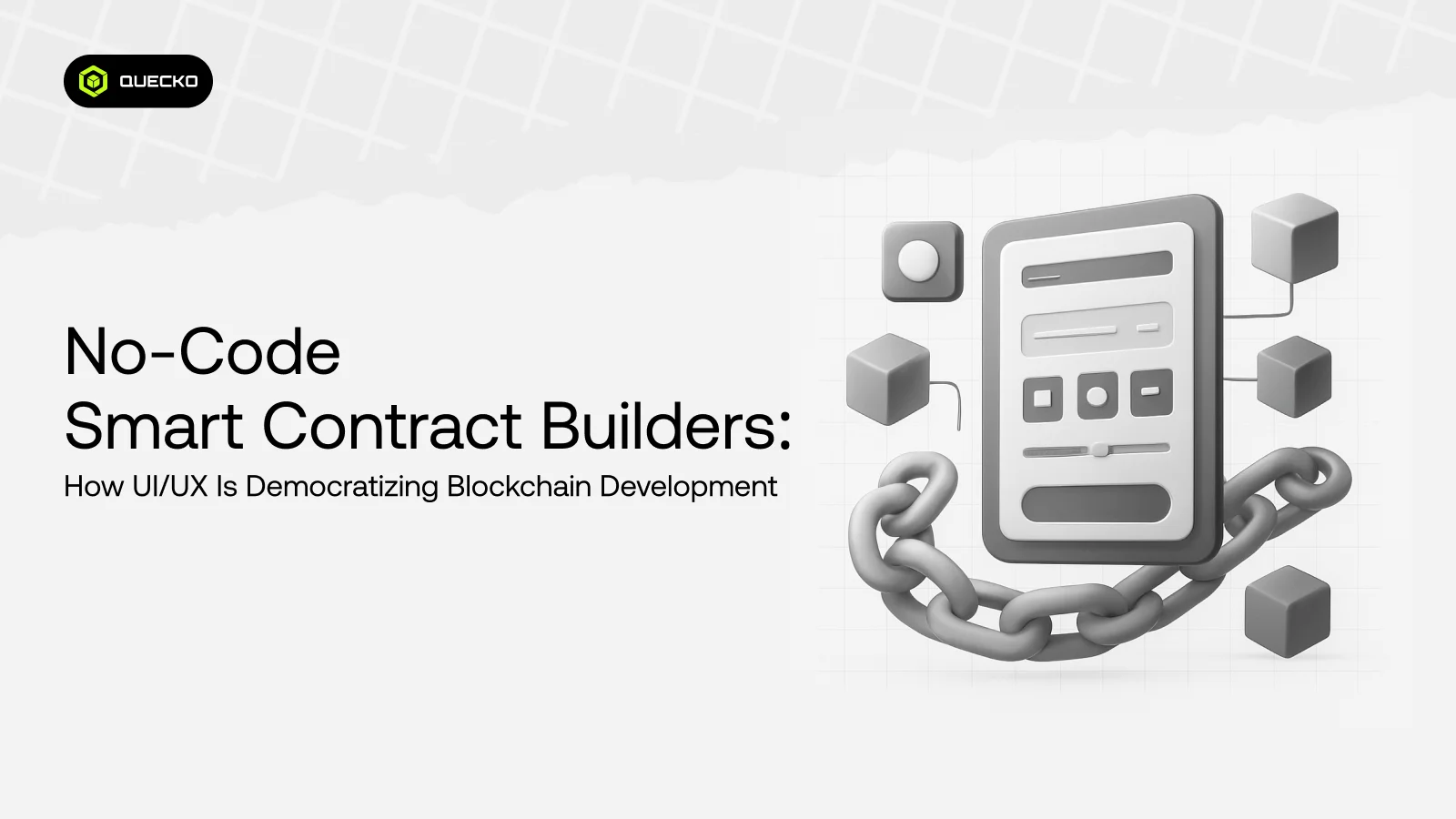The Dark Forest of MEV: How Searchers Extract Millions From Your Trades
Discover how MEV searchers exploit the dark forest of blockchain transactions to extract millions in profit, reshaping the future of decentralized trading and highlighting the risks and challenges for traders.

In the rapidly evolving landscape of blockchain and decentralized finance (DeFi), a shadowy underworld operates behind the scenes; one where a select group of entities, known as searchers, exploit the mechanics of transaction ordering to extract immense profits. This clandestine activity, often referred to as Miner Extractable Value (MEV), reveals a complex and opaque ecosystem reminiscent of a “dark forest,” where the stakes are high and the risks are concealed. As traders and users navigate the decentralized frontier, they remain largely unaware of the hidden forces at play that can manipulate transaction sequences, front-run trades, or capitalize on arbitrage opportunities; often at their expense.
Central to this manipulation are factors such as fluctuating gas prices and the competition for limited block space, which influence how transactions are prioritized and included in blocks. Ap Block builders play a crucial role in assembling transactions, often optimizing for maximum profit, which can lead to strategies like front-running or sandwich attacks. The introduction of smart contracts has further complexified the ecosystem, enabling automated and programmable trading strategies that can be exploited through MEV extraction.
The recent milestone known as The Merge, which transitioned Ethereum to a proof-of-stake consensus, has also impacted how gas fees are structured and how block space is allocated among validators and block builders. This shift aims to improve network security and efficiency but also introduces new dynamics for MEV extraction and the role of searchers.
What is MEV?
Maximal Extractable Value (MEV) refers to the profit that can be earned by strategically ordering, including, or excluding transactions within a blockchain block; particularly on networks like Ethereum. For example, with the introduction of Uniswap V3, which offers concentrated liquidity pools, MEV opportunities have increased as traders and block builders attempt to capitalize on price movements. Notable figures like Dan Robinson and Phil Daian have extensively researched MEV, highlighting both its potential for profit and its risks to network fairness. As MEV can lead to elevated gas fees and network congestion, efforts are underway—such as protocol innovations and tools—to mitigate its negative impacts and promote a more equitable transaction environment, ensuring that rewards do not come at the expense of decentralization and security.
Key Points:
Here are the key points of “What is MEV?” (Miner Extractable Value):
- MEV, or Maximal Extractable Value (sometimes referred to as Miner Extractable Value), is a concept in blockchain and cryptocurrency ecosystems that pertains to the potential profits that can be earned by block producers—such as miners or validators.
Maximal Extractable Value (MEV) refers to the maximum amount of profit that a block producer can extract from the inclusion and sequencing of transactions in a blockchain block beyond the standard block reward and transaction fees. This involves leveraging their control over the transaction ordering process to capitalize on arbitrage opportunities, front-running, sandwich attacks, liquidation events, or other profitable maneuvers within the network’s transaction pool (mempool).
- How MEV Works:
Miners have the power to prioritize transactions, reorder them, or include certain transactions to maximize their earnings beyond standard block rewards and fees. This capability plays a significant role in the evolving landscape of blockchain technology, especially with developments like the “Uniswap V3” upgrade and the “The Merge” transition to proof-of-stake on Ethereum.
Block builders, such as those involved in organizing transaction data, can influence network efficiency and fee structures, particularly impacting “gas fees” which are paid by users to have their transactions processed. Experts like “Phil Daian” and “Dan Robinson” have extensively studied these dynamics, highlighting how miners and block builders can shape transaction inclusion strategies.
The Ethereum Foundation continues to oversee and promote improvements to address these issues, aiming for a more decentralized and fair network. Overall, understanding the roles of miners, block builders, and key figures helps clarify how transaction prioritization can affect the entire ecosystem.
- Sources of MEV (Miner Extractable Value):
Miner Extractable Value (MEV) refers to the profit that blockchain miners, validators, or block proposers can extract by strategically ordering, including, or excluding transactions within a block. MEV arises from the ability to influence transaction sequencing and block content, offering opportunities to capitalize on on-chain opportunities beyond standard transaction fees.
With the transition known as “The Merge,” Ethereum shifted from proof-of-work to proof-of-stake consensus, impacting how MEV is extracted and managed. Block builders now play a crucial role in assembling blocks, often competing in a gas auction to determine the order of transactions, which can significantly influence MEV opportunities.
Gas fees remain a key component in transaction prioritization, especially during high-demand periods where high-frequency traders engage in strategies like DEX arbitrage—exploiting price differences across decentralized exchanges—and flash loans, which enable complex, instant transactions without collateral.
Atomic arbitrage leverages these tools to execute multiple trades simultaneously within a single transaction, minimizing risk and maximizing profits derived from MEV. The Ethereum Foundation continues to research and develop solutions to mitigate the negative impacts of MEV, promote fairness, and ensure network security amidst these lucrative on-chain activities.
- MEV Mitigation Strategies:
Mitigating MEV Miner Extractable Value involves a combination of protocol innovations, economic incentives, cryptographic techniques, and user practices. The overarching goal is to foster a fairer, more transparent ecosystem where the value extracted from transaction ordering does not undermine network integrity or user trust. As blockchain technology evolves, ongoing research and development continue to refine these strategies, aiming for robust solutions that balance decentralization, security, and efficiency.
Recent developments like “The Merge” have shifted the landscape, impacting how “block builders” and validators operate within the network. Efforts to reduce “gas fees” and prevent manipulative “gas auctions” are crucial in limiting opportunities for “high-frequency traders” and “trading bots” to exploit the system. Addressing practices such as “DEX arbitrage” and the use of “flash loans” is vital in curbing manipulative tactics that lead to “profitable trades” at the expense of regular users.
5.Importance of Understanding MEV (Miner Extractable Value)
Understanding MEV (Miner Extractable Value) is essential for anyone involved in blockchain technology—developers, users, investors, or regulators. It influences network security, economic incentives, fairness, and overall ecosystem health. By comprehending the dynamics of MEV, stakeholders can better navigate, shape, and innovate within the decentralized landscape, fostering more secure, transparent, and equitable blockchain networks.
In the context of the Ethereum network, block builders play a crucial role in determining which transactions are included in each block. They often utilize strategies such as gas auctions to maximize profits, especially through profitable trades like DEX arbitrage or executing flash loans. These activities can impact gas fees, affecting transaction costs for users and traders.
Trading bots and liquid staking protocols have also become integral in optimizing transaction execution and staking yields, respectively. Understanding how Ethereum virtual machines process transactions helps in developing strategies for profitable trades and mitigating risks.
The Dark Forest Analogy
- Fair Ordering Mechanisms: Implement protocols that enforce fair transaction sequencing, such as First-In-First-Out (FIFO) or time-based ordering, to reduce the advantage gained from front-running.
- Justice Sorting: Techniques like cryptographic commit-reveal schemes ensure that transaction orderings are transparent and tamper-proof, limiting malicious manipulation.
- Encrypted Mempools: Transactions are encrypted upon submission and only revealed to miners at a designated time, preventing front-runners from seeing pending transactions.
- Flashbots & Private Relays: Platforms like Flashbots create private channels where transactions are bundled and submitted directly to miners, reducing the exposure of mempool data to malicious actors.
- Auction-Based Approaches: Instead of miners extracting MEV unilaterally, users can participate in auctions to bid for transaction ordering rights, distributing MEV profits more equitably.
- MEV-Share Models: Protocols that share MEV profits among participants, incentivizing honest behavior and reducing malicious extraction.
- Consensus Layer Adjustments: Modifying consensus rules to limit the ability of block producers to reorder or exclude transactions—e.g., proposer/bayload restrictions.
- Time-locked Transactions: Requiring certain transactions to be executed only after a specific time or block height, discouraging immediate front-running.
- Pre-Transaction Validation: Ensuring transactions adhere to invariants that prevent manipulative behaviors, like price manipulation or sandwich attacks.
- Slashing Conditions: Penalize malicious miners or validators that engage in harmful transaction reordering or censorship, especially when such actions lead to violations of the liquidation threshold or exploit liquidation mechanisms.
MEV-Resistant Protocols: Design protocols inherently resistant to MEV, such as Celo, Arbitrum, or Ethereum 2.0 with sharding and other scalability solutions.
- Automated Front-Running Protection: Use of smart contracts and protocols that automatically detect and prevent front-running or sandwich attacks.
- Maximizing Profits: Recognizing how MEV operates enables miners and validators to optimize their transaction ordering strategies, thereby increasing their revenue beyond standard block rewards and transaction fees.
- User Experience: A lack of transparency around MEV can result in users experiencing front-running, sandwich attacks, or transaction reordering, undermining trust in decentralized platforms.
- Evolving Threats and Opportunities: As blockchain technology advances, so do MEV strategies. Continuous understanding enables stakeholders to adapt and develop resilient systems.
This concept resonates with the strategic considerations seen in the realm of blockchain and decentralized finance (DeFi), where “block builders” and “gas fees” play a crucial role in transaction execution and network security. Similar to civilizations deciding whether to reveal their presence, participants in DeFi protocols must consider “gas auctions” and the costs associated with “gas fees” when submitting transactions, especially during high network congestion. The use of “flash loans” and other advanced financial instruments like “smart contracts” on platforms such as Ethereum virtual machines (EVMs) exemplifies how digital entities can operate with a high degree of autonomy and strategic silence, avoiding detection or unwanted attention from other market participants.
The Dark Forest Analogy challenges optimistic assumptions about universal communication and cooperation, emphasizing caution, strategic silence, and the inherent risks of interstellar interaction. It underscores the importance of strategic planning and risk management, akin to the practices of “block builders” and traders navigating the complex world of blockchain technology and DeFi. By understanding these parallels, we gain a profound lens through which to consider the future of humanity, our place in the cosmos, and the importance of careful, strategic interaction within both the universe and the rapidly evolving decentralized financial ecosystem.
Overview of the Analogy:
Imagine the universe as a vast, dark forest filled with countless trees (representing civilizations). Each tree is silent, hidden, and cautious—because making any noise could reveal its location. In this ecosystem, block builders act as meticulous forest artisans, assembling the most valuable branches. The forest is alive with activity like a gas auction, where the quickest trees bid for the brightest leaves. DEX arbitrage trees swiftly move between different groves, seeking the highest yield. Sometimes, flash loans enable these trees to rapidly acquire resources without long-term commitment, fueling their growth. Underlying this complex forest are DeFi lending protocols, providing the nourishment that sustains these silent giants. Meanwhile, Wall Street traders peek through the canopy, analyzing the forest’s patterns for profit opportunities. The block proposers are the guardians who select which branches get to shine, while the pursuit of Maximal/Miner Extractable Value (MEV) drives some trees to stretch the limits of their influence, trying to harvest the maximum possible value from their position. In this analogy:
- The Forest: The universe, an expansive, dark, and silent environment.
- The Trees: Intelligent civilizations spread across the cosmos.
- Sound or Light Emissions: Communications or signals that could betray a civilization’s position.
- The Darkness: The universe’s inherent danger and the unknown threats lurking within.
Implications of the Analogy:
- It offers a possible solution to the Fermi Paradox: civilizations are not contacting us because they are hiding or have destroyed themselves or others out of fear.
- It suggests that the universe could be filled with intelligent life, but the “dark forest” of mutual suspicion keeps all civilizations silent.
- It emphasizes the significance of cautious exploration and communication in the search for extraterrestrial intelligence.
The Dark Forest Analogy vividly depicts a universe where every civilization is a silent, cautious entity, fearing detection and potential destruction. This analogy provides a sobering perspective on the apparent silence of the cosmos, highlighting themes of survival, distrust, and the perilous nature of interstellar communication.
How Searchers Extract Value
Searchers, whether individuals or organizations, aim to derive maximum benefit from their search activities—be it for information, products, services, or opportunities. The process of extracting value involves a combination of strategic behaviors, analytical skills, and technological tools, such as understanding concepts like “block builders,” “DEX arbitrage,” “flash loans,” “block proposers,” and “proposer-builder separation.” They must also consider factors like “network latency,” participate in “order flow auctions,” and employ tactics such as “liquidity manipulation,” “CEX-DEX arbitrage” and “gas golfing” to optimize their outcomes. Here’s a comprehensive overview.
- Identifying Needs and Goals
Searchers start by clearly defining what they seek. This involves understanding their specific needs, whether for knowledge, solutions, or products, and setting clear objectives to guide their search process. For example, in the realm of blockchain and decentralized finance, they might explore topics like “block builders,” “DEX arbitrage,” “flash loans,” “block proposers,” “proposer-builder separation,” “order flow auctions,” “liquidity manipulation,” or “gas golfing” to better understand the mechanisms and strategies involved.
- Formulating Effective Search Strategies
A key to extracting value lies in how searchers formulate their queries and strategies, such as leveraging “block builders,” understanding “DEX arbitrage,” utilizing “flash loans,” navigating “block proposers,” applying “proposer-builder separation,” engaging in “order flow auctions,” detecting “liquidity manipulation,” and employing “gas golfing.”
Keyword Optimization: Using precise and relevant keywords to improve search relevance.
- Boolean Logic & Advanced Operators: Combining terms with operators (AND, OR, NOT) to refine results.
- Source Selection: Knowing which platforms, databases, or search engines are most likely to yield valuable information.
3. Utilizing Multiple Information Sources
Searchers leverage diverse sources—search engines, scholarly databases, social media, forums, industry reports—to gather comprehensive and diverse data, increasing the likelihood of uncovering valuable insights related to “block builders,” “DEX arbitrage,” “flash loans,” “block proposers,” “proposer-builder separation,” “order flow auctions,” “liquidity manipulation,” and “gas golfing.”
- Evaluating and Filtering Results
Not all search results hold equal value. Effective searchers:
- Assess Credibility: Prioritize reputable sources.
- Analyze Relevance: Focus on content that best addresses their needs.
- Identify Gaps: Recognize missing information or conflicting data.
5. Synthesizing and Interpreting Information
Once relevant data is collected, searchers analyze and synthesize it to extract actionable insights:
- Data Summarization: Condensing large volumes of data into key points.
- Pattern Recognition: Identifying trends or anomalies.
- Critical Thinking: Evaluating the validity and applicability of information.
6. Applying Insights for Decision-Making
The ultimate goal is to convert information into value:
- Informed Decisions: Making choices based on comprehensive knowledge.
- Problem Solving: Addressing specific issues efficiently.
- Strategic Planning: Developing strategies grounded in well-researched data.
7. Leveraging Technology and Tools
Modern searchers utilize technological tools to enhance their efficiency. Some of the examples include:
- Search Algorithms & AI: Improving relevance through machine learning.
- Data Analytics: Extracting patterns and insights from raw data.
- Automation & Bots: Automating routine searches to save time.
8. Continuous Learning and Adaptation
Effective searchers—whether in blockchain protocols or financial markets—adapt their techniques based on feedback and evolving information landscapes, ensuring ongoing value extraction. Techniques like “gas golfing” and understanding concepts such as “Nash Equilibrium” help optimize their strategies in complex environments.
Searchers extract value primarily through strategic planning, critical evaluation, and efficient use of tools and sources. By systematically identifying needs—such as recognizing opportunities for “DEX arbitrage”—refining search methods, and interpreting results effectively, they turn raw data into meaningful insights. This process often involves understanding key roles like “block builders” and “block proposers,” especially within the context of “proposer-builder separation” in blockchain protocols.
The Impact on Traders
The advent of technological advancements, market globalization, and evolving regulatory landscapes have significantly transformed the environment in which traders operate. These changes have had profound effects on their strategies, risk management, and overall experience. For instance, strategies like “DEX arbitrage,” “cross-chain arbitrage” and “CEX-DEX arbitrage” have become increasingly prevalent as traders seek to exploit price discrepancies across decentralized exchanges and different blockchain networks. The role of “block proposers” and the implementation of “proposer-builder separation” have also impacted transaction ordering and network security.
Additionally, techniques such as “gas golfing” are employed to optimize transaction costs, especially during high network activity. Influential figures like “Georgios Konstantopoulos” have contributed to shaping these evolving landscapes through research and thought leadership. Concepts such as “Nash Equilibrium” help traders understand strategic interactions within these markets, while regulatory considerations like the “liquidation threshold” are crucial for managing leverage and avoiding forced liquidations in volatile environments. Overall, these innovations and principles continue to redefine the modern trading experience.
Efforts to Mitigate MEV
Efforts to mitigate Miner Extractable Value (MEV) represent a crucial aspect of the ongoing development of blockchain security and integrity. MEV refers to the profit that miners, validators, or block proposers can extract by reordering, including, or censoring transactions within a block. While MEV can incentivize miners to secure the network, it also poses risks such as transaction front-running, sandwich attacks, network centralization, and reduced user trust.
Emerging solutions like proposer-builder separation aim to reduce the negative impacts of MEV by delineating roles between block proposers and builders, thereby limiting their ability to manipulate transaction ordering. Additionally, concepts such as Nash Equilibrium are being studied to understand strategic behaviors among miners and validators in the presence of MEV extraction incentives. Managing liquidation thresholds within smart contract systems is also critical to prevent cascading failures during liquidation events, which can be exacerbated by MEV activities. Cross-chain arbitrage opportunities further complicate the landscape, as MEV strategies extend across multiple blockchain networks. Addressing these challenges is essential for the sustainable development of secure and fair blockchain ecosystems.Key Strategies and Approaches to Mitigate MEV
1. Protocol-Level Solutions
- Fair Sequencing and Timestamping:
Protocols can implement mechanisms that ensure transactions are ordered fairly, such as using cryptographic commit-reveal schemes or timestamping transactions to prevent front-running and reordering. - Consensus Algorithm Improvements:
Transitioning from proof-of-work (PoW) to proof-of-stake (PoS) consensus models, as seen in Ethereum 2.0, can reduce some MEV extraction avenues by introducing more predictable and censorship-resistant block production. - Inclusion of MEV-Resistant Protocols:
Protocols like EIP-1559 (Ethereum’s fee market upgrade) and Proposer/Backer/Builder models aim to reduce the incentives for MEV extraction by stabilizing transaction fees and decentralizing block proposal rights.
2. MEV-Aware Infrastructure and Tools
- Flashbots and Private Transaction Funnels:
Flashbots is a research and development organization that provides a transparent, permission-less system enabling miners, block proposers, and validators to receive bundled transactions privately. This reduces the likelihood of front-running by allowing users to submit transactions directly to miners or block proposers without exposing them to the public mempool. The platform also facilitates activities such as cross-chain arbitrage and managing liquidation thresholds, enhancing efficiency and security in blockchain transactions. - MEV-Relay Networks:
These are platforms that facilitate the private submission of transaction bundles, effectively shielding users from MEV extraction strategies like sandwich attacks. - Automated Arbitrage and Sandwich Attack Prevention Tools:
Specialized tools monitor network activity to detect and prevent MEV extraction strategies, providing users with more secure transaction pathways.
3. Economic and Incentive-Based Measures
- Redistribution of MEV Profits:
Some proposals advocate redistributing MEV profits back to users or the network via mechanisms like MEV auctions, where MEV profits are shared or auctioned transparently, reducing the incentive for malicious extraction by block proposers and aligning with the goals of blockchain protocols. - Incentivizing Honest Behavior:
Designing incentive schemes that reward block proposers, miners, or validators for maintaining fair transaction ordering can help align interests and discourage MEV extraction, especially in contexts involving layer2 rollups. - 4.Decentralized and Censorship-Resistant Architectures
- Decentralized Block Production:
Encouraging diverse validator participation, including block proposers, minimizes centralization, which can amplify MEV extraction. Protocols that promote decentralization, such as those involving 0x exchange, reduce the risk of collusion among a few entities. - Time-Delay and Randomized Block Proposals:
Introducing randomness or delays in block proposal timing can make it more difficult for malicious actors to predict and exploit MEV opportunities.
5. Research and Community Initiatives
Research and Community Initiatives” involve collaborative efforts to advance knowledge and address local or global challenges. These initiatives typically include academic studies, innovation projects, and outreach programs designed to engage communities, promote sustainable development, and foster social empowerment. By integrating research with community participation, these initiatives aim to generate impactful solutions, enhance education, and strengthen social cohesion.
- Academic and Industry Research:
Continuous research aims to understand MEV dynamics better and develop new mitigation techniques, including formal verification of protocols and game-theoretic analyses. - Community Governance and Policy Development:
Community-led efforts aim to establish norms and standards that discourage harmful MEV practices, fostering a more equitable ecosystem.
Mitigating MEV is a multifaceted challenge requiring technological innovation, economic incentives, community engagement, and ongoing research. While complete elimination may be infeasible due to the inherent economic incentives involved, these efforts aim to reduce harmful MEV activities, promote fairness, and enhance the overall security and stability of blockchain networks.
Conclusion
In conclusion, “The Dark Forest of MEV: How Searchers Extract Millions From Your Trades” sheds light on a complex and often opaque facet of the blockchain ecosystem—Maximal Extractable Value (MEV). The article underscores how searchers exploit transaction ordering, inclusion, and manipulation within block production to extract substantial profits, often at the expense of regular users and the integrity of decentralized networks. This phenomenon creates a “dark forest” environment where opportunistic actors navigate the blockchain landscape, leveraging advanced strategies such as front-running, back-running, and sandwich attacks to capitalize on market micro-movements.
The implications of MEV extend beyond mere profit; they pose significant challenges to fairness, transparency, and security within blockchain systems. As searchers continue to innovate with increasingly sophisticated techniques, the risks of network centralization, transaction censorship, and economic instability grow. Addressing these issues requires a concerted effort from developers, protocol designers, and the broader community to develop resilient solutions—such as MEV auctions, fair ordering protocols, and enhanced transparency mechanisms—that mitigate exploitative behaviors while preserving the decentralized ethos.
Ultimately, understanding and confronting the dark forest of MEV is crucial to fostering a more equitable and secure blockchain environment, ensuring that the technology serves its foundational principles rather than undermines them for short-term gains.
Date
4 months agoShare on
Related Blogs

Tokenomics Design in 2025: Building Sustainable Crypto Economies
2 days ago

AI-Powered Smart Contract Wallets The Future of User-Friendly Blockchain UX
2 months ago

Investing in Cryptocurrency: Tips for Beginners
2 months ago

No-Code Smart Contract Builders: How UI/UX is Democratizing Blockchain Development
2 months ago







